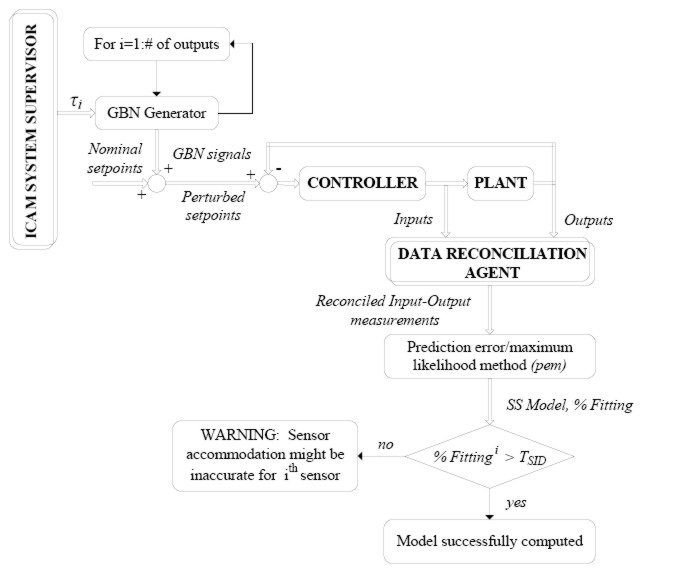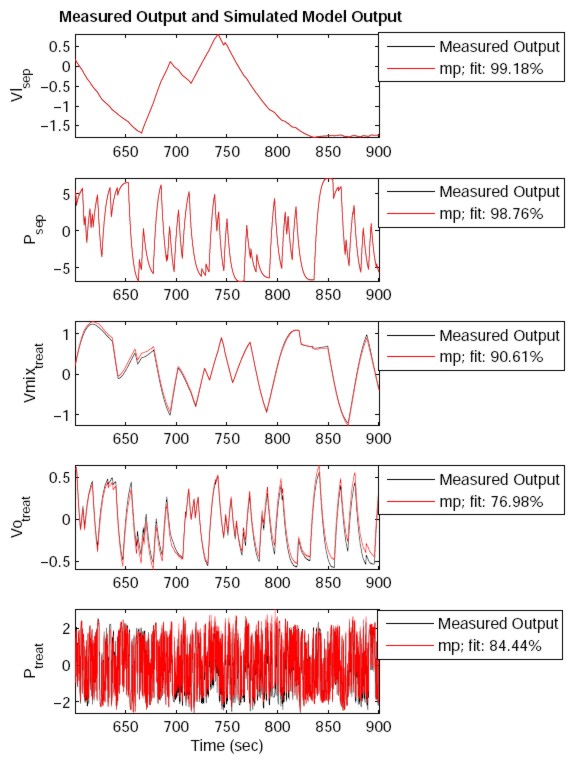|
System or model identification is part theory, part art. The LMId theory is very sophisticated and well established; however the "art" depends on the application, requirements and engineering judgment. First, we chose a well-established algorithm, the standard prediction error minimization or PEM method available in MATLAB. Another important decision is the choice of signals used to perturb the process in order to generate input/output data that are "sufficiently exciting" for good model identification. We first investigated the common pseudo-random binary signal (PRBS) approach, but discovered that the models obtained were not sufficiently accurate for fault detection, isolation and accommodation (FDIA). A more recent approach uses low-pass generalized binary noise (GBN) signals, which have a flat spectrum up to a bandwidth that can be adjusted according to the control bandwidths of the process. The final major consideration is choosing between open- and closed-loop model identification. In practice, it is often desirable or even necessary to carry out identification tests in closed-loop operation -- for most industrial processes opening loops will cause production loss or even safety problems. Therefore, we chose to perform the identification tests in closed loop. The resulting schematic for the LMId Agent is depicted in Figure 1. Note that this agent is directed by the ICAM Supervisor and interacts with the DDR Agent.  Figure 1. LMId Agent Schematic Results from a representative LMId procedure are depicted in Figure 2. In this exercise, a 900 second sample of input/output data was taken; the first 600 sec. were used for LMId and the last 300 sec. were used for checking the accuracy of the identified model. Visually, the match between the original process output signals and synthetic outputs generated by passing the process inputs through the linearized model appear to be excellent. For our application, FDIA was effective when the lowest model fit was greater than 75%, as is the case here.  Figure 2. System Identification Result This agent was developed by Dr. Maira Omana as part of her PhD research; her thesis may be downloaded HERE. This part of the UNB PAWS effort has been completed and delivered. Return to the UNB PAWS Home Page Information supplied by: Jim Taylor Last update: 9 November 2009 Email requests for further information to: Jim Taylor (jtaylor@unb.ca) |